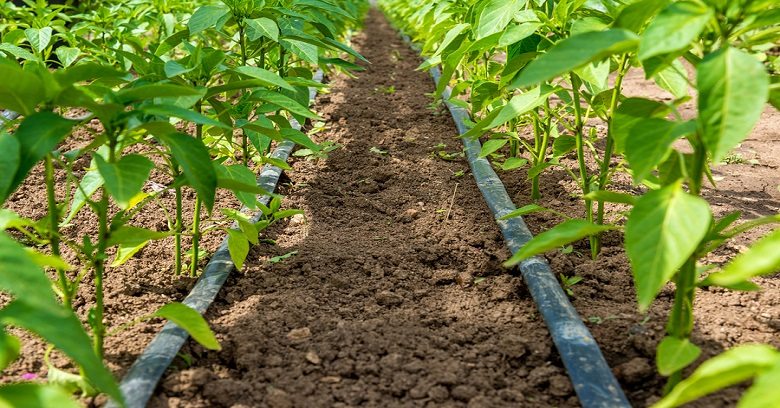Table of Content
Check the manufacturer’s information to determine what you require for your particular gardening needs. Hose End Timers DIG’s line of hose end timers offers a convenient way to automate a drip or sprinkler irrigation system from a faucet or garden hose. Drip irrigation delivers water to the roots and this fuels photosynthesis and nutrient uptake. Watering at ground level also helps to prevent the spread of soil-borne diseases that can be exacerbated by overhead watering. Water is used more economically than with an overhead sprinkler system which works better for covering large areas such as lawns.
They can be somewhat complicated to install, depending what type you choose, but there's plenty of information available online. Ask a local lawn or garden professional if they install irrigation systems. Once the system is set up, all you need to do is turn the water on and off. Also known as micro-sprinklers, this is a device you can attach to your irrigation hose system. Micro-sprinklers are normally used by orchardists but are becoming increasingly popular with home gardeners. They're ideal if you have large trees on your property, and can also be used for flower beds, ground cover areas, hillsides and slopes.
Rain Bird Drip Expansion Kit
Most soaker hoses should last at least 3 to 5 years before they need to be replaced. The simplest method for laying out a drip irrigation system is to use in-line emitter hoses. These hoses can snake around a garden bed between plants and flowers. Another approach, somewhat more complex, is to create zones (i.e., a stand of several plants in one area) and run branches of emitters to them, off the main distribution hose.

It only works when set up in straight lines, but many gardeners have straight edges on their flower beds. Soaker hoses are hoses with holes spaced evenly along their length and they can be placed alongside row crops, hedges, lines of shrubs, lawns, or in vegetable gardens. These hoses seep water slowly into the soil all along their length. Be aware that some varieties are made of recycled rubber, and so may not be the best choice for using on your food crops, but are safe to use in your yard. These hoses can also be left in place all year round, as they're not damaged by freezing.
Lay Out the Soaker Hoses
Drip irrigation systems require several different emitter nozzles. Depending on your garden’s design and needs, some of these nozzles will be better suited than others. Before you attempt to plan out your irrigation system, familiarize yourself with the following types of emitter nozzles, each with strengths and weaknesses worth considering.
Several different patterns are commonly used when laying out the tubing. For plants in rows, dripline is run along the beds, kept in place by U-shaped hold-downs every 3 feet or so. For more densely grouped plants you might choose to snake the dripline along the bed. When you are on vacation or simply away from your garden, drip irrigation can be set up with a timer to deliver water consistently. It’s a very efficient way to use water because the water goes straight to the plants without evaporation or runoff. Drip irrigation can be more costly than traditional watering methods.
Point-Source Emitters
They can then be installed anywhere in the garden by inserting a stake into the ground. We made sure to include options for both small and large areas, with 50-feet tubing ideal for moderate-size gardens and up to as much as 250 feet for larger spaces. We also included some options that are easily extendable when needed for budding green thumbs looking to install new planters. Dirt, small insects, and other obstructions can make their way into a drip irrigation system through the emitters—and in-line screen filters can’t prevent these intruders. Some systems, however, come with automatic flush valves that help reduce the possibility of a clog.
Never run a fertilizer containing phosphorus before or after a calcium fertilizer without flushing the lines completely as you will create a precipitate that will permanently clog the emitters. Drip Fittings DIG’s drip irrigation fittings are available in a variety of sizes and configurations for both home gardeners and professionals. The compression fittings are used with the 1/2″ drip tubing and the barbed fittings are used with the ½” or 1/4″ drip tubing or micro tubing. The compression fittings use a simple wrist action; the drip tubing is “walked” into the compression fittings for a very tight fit with no tools, glue, or clamps required. The barbed irrigation fittings are pushed into the drip tubing or micro tubing to ensure a leak proof fit. DIG provides additional types of drip irrigation fittings with various configurations and uses.
They regulate flow and help to prevent pressure leaks from developing in the hose line. The average drip irrigation kit runs anywhere between $15 and $480, according to HomeGuide. If you’re looking for a way to save money and use some stuff you already have, you can actually create drip irrigation with a garden house. With this more efficient watering system, there’s hardly any work involved at all. Since drip irrigation uses less water than other methods, you’re also saving money. If you want to save some money and make use of a few things you have lying around the house, try to create DIY drip irrigation with a garden house.

Measure this distance to make sure you have enough feet of regular garden hose to reach the planted area. Watch out for rodents, like mice, that may chew the pipes in search of moisture. It is a good idea to have several hose line repair couplings on hand for when damage to the system occurs. If you only plan on planting a spring or summer garden, you can extend the life of your irrigation system by cleaning and rolling up the hoses at the end of the growing season. It is just a matter of using elbows and various lengths of pipe to allow the drip lines to be at ground level between the beds .
Learn more about how you would plan and install a drip irrigation system. Drip irrigation systems are easy to install because they require little to no digging. The main distribution hoses come in colors that match your mulch, and they tack into place with landscaping staples. The emitters install with barbed fittings that push into the distribution hose by hand.

Consider poison baits and traps to prevent additional damage to your plants and drip lines. Some systems, especially most emitter systems, need to be dismantled and stored over the winter in cold climates to avoid damage from freezing. You'll want to periodically inspect your irrigation system to make sure it's functioning properly, and replace or repair any parts that are worn out or damaged.

No comments:
Post a Comment